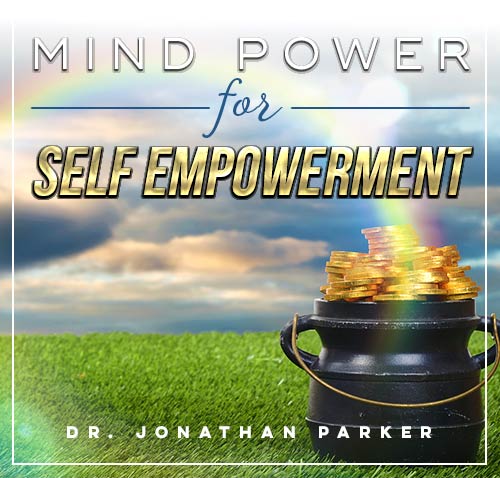Subconscious Mind and Trauma Healing: Techniques and Tips

Looking for more amazing products? Check out our online store and explore our collection here! Happy shopping!
Before diving in, please note: This post is for informational purposes only. If you’d like to know more about how we approach topics, feel free to check out our friendly Disclaimer Page.
Hey there, amazing readers! 
We’re committed to delivering quality posts, and your support (even just sticking around despite the ads) means everything to us. So, bear with us, and thanks for helping us keep the good vibes rolling. Now, on to the fun stuff!
TRANSLATE BUTTON AT THE END OF THE ARTICLE
Understanding the Subconscious Mind
The subconscious mind operates beneath the surface of our conscious awareness, influencing our thoughts, emotions, and behaviors without us even realizing it.
It is like the hidden engine that drives our actions, drawing on past experiences, beliefs, and memories to shape our present reality.
Unlike the conscious mind, which is logical and rational, the subconscious is more emotional and instinctual, making decisions based on patterns and associations stored deep within our psyche.
Understanding how the subconscious mind works is crucial in trauma healing, as it holds the key to unlocking deep-seated wounds and facilitating healing on a profound level.
The Impact of Trauma on the Subconscious
Trauma can have a profound impact on the subconscious mind, creating lasting imprints that shape our perceptions of ourselves and the world around us.
When we experience trauma, whether it be physical, emotional, or psychological, our subconscious mind goes into survival mode, storing the memory of the traumatic event in an effort to protect us from similar dangers in the future.
However, these unresolved traumas can manifest as anxiety, depression, PTSD, or other mental health issues, as the subconscious continues to replay the traumatic event, keeping us stuck in a cycle of fear and pain.
Healing trauma involves delving into the subconscious to release these trapped emotions and beliefs, allowing for true healing and transformation to occur.
Techniques for Healing Trauma
There are various techniques that can be used to heal trauma by accessing the subconscious mind and addressing the root causes of pain and suffering.
Some effective methods include:
EMDR (Eye Movement Desensitization and Reprocessing): This therapy involves using bilateral stimulation to help process traumatic memories and rewire negative beliefs.
Hypnotherapy: By inducing a state of deep relaxation, hypnotherapy can access the subconscious mind to uncover and heal past traumas.
Inner Child Work: This involves connecting with the wounded inner child within us to provide comfort, reassurance, and healing.
Somatic Experiencing: Focusing on bodily sensations and movements can help release stored trauma and restore a sense of safety and grounding.
Importance of Addressing the Subconscious
Addressing the subconscious mind is crucial in trauma healing as it holds the key to unlocking deep-seated wounds and facilitating lasting healing.
While traditional talk therapy can be beneficial in processing emotions and gaining insight, it often only scratches the surface of trauma healing.
By accessing the subconscious, individuals can uncover the root causes of their pain and suffering, allowing for true transformation to occur on a deeper level.
Ignoring the subconscious in trauma recovery can lead to unresolved issues resurfacing in the future, hindering the healing process and perpetuating cycles of suffering.
Tips for Working with the Subconscious Mind
Working with the subconscious mind can be a powerful tool in trauma healing, but it requires a gentle and compassionate approach.
Here are some tips for effectively working with the subconscious:
Practice Self-Compassion: Be kind and gentle with yourself as you delve into deep emotional wounds.
Create a Safe Space: Find a quiet, calming environment where you can relax and focus on your inner world.
Stay Present: Practice mindfulness to stay grounded in the present moment and avoid getting lost in past traumas.
Use Creative Expression: Expressing your emotions through art, writing, or movement can help release pent-up feelings stored in the subconscious.
Integrating Mindfulness in Trauma Healing
Mindfulness is a powerful tool in trauma healing as it helps individuals stay present and aware of their thoughts, emotions, and bodily sensations.
By practicing mindfulness, individuals can learn to observe their subconscious patterns without judgment, allowing for greater insight and self-awareness.
Mindfulness techniques such as meditation, deep breathing, and body scans can help regulate the nervous system, reduce anxiety, and promote emotional healing.
By integrating mindfulness into trauma healing practices, individuals can cultivate a sense of inner peace and resilience in the face of adversity.
Visualization as a Healing Tool
Visualization is a powerful technique for healing trauma by accessing the subconscious mind and reprogramming negative beliefs and emotions.
By visualizing a safe, calming place or engaging in guided imagery exercises, individuals can create new neural pathways in the brain that promote healing and relaxation.
Visualization can help individuals process traumatic memories, release trapped emotions, and envision a positive future free from past pain.
By harnessing the power of visualization, individuals can transform their subconscious mind and create a sense of empowerment and peace within themselves.
Body-Based Approaches for Trauma Healing
Trauma is stored not only in the mind but also in the body, leading to physical symptoms such as tension, pain, and inflammation.
Body-based approaches such as yoga, tai chi, and somatic therapy can help release stored trauma from the body and restore a sense of safety and balance.
By focusing on bodily sensations and movements, individuals can process trapped emotions, release muscular tension, and regulate the nervous system.
Body-based approaches for trauma healing can help individuals reconnect with their bodies, release pent-up stress and trauma, and restore a sense of wholeness and well-being.
Role of Therapy in Subconscious Healing
Therapy plays a vital role in subconscious healing by providing individuals with a safe space to explore and process deep emotional wounds.
Therapists trained in trauma-informed approaches can help individuals access their subconscious mind, uncover root causes of pain, and develop coping strategies for healing.
Through techniques such as talk therapy, EMDR, somatic experiencing, and cognitive-behavioral therapy, therapists can guide individuals on a journey of self-discovery and healing.
Therapy provides a supportive and structured environment for individuals to address past traumas, gain insight into their thought patterns, and cultivate resilience in the face of adversity.
Building Resilience in Trauma Recovery
Building resilience is an essential aspect of trauma recovery, as it helps individuals bounce back from adversity and thrive in the face of challenges.
Resilience involves developing coping skills, cultivating self-awareness, and fostering a sense of inner strength and optimism.
By building resilience, individuals can navigate the ups and downs of the healing journey with grace and courage.
Techniques such as mindfulness, self-compassion, and positive affirmations can help individuals build resilience and face trauma recovery with confidence and hope.
Building resilience is a lifelong process that requires patience, perseverance, and self-love.
Healing Trauma Through Self-Compassion
Self-compassion is a powerful tool in healing trauma by nurturing a sense of kindness, acceptance, and understanding towards oneself.
When individuals practice self-compassion, they learn to treat themselves with the same care and empathy they would offer to a loved one in pain.
Self-compassion involves acknowledging one’s suffering, validating one’s emotions, and offering comfort and support to oneself.
By cultivating self-compassion, individuals can heal deep emotional wounds, release self-judgment, and foster a sense of inner peace and wholeness.
Self-compassion is an essential ingredient in trauma recovery, as it helps individuals navigate the healing journey with grace, resilience, and self-love.
Seeking Professional Help When Needed
While self-help techniques can be beneficial in trauma healing, it is essential to seek professional help when needed.
Therapists trained in trauma-informed approaches can provide individuals with the support, guidance, and tools they need to heal deep emotional wounds and transform their subconscious beliefs and patterns.
By working with a therapist, individuals can access specialized techniques and interventions tailored to their unique needs and experiences.
Therapy offers a safe and confidential space for individuals to explore their trauma, gain insight into their subconscious mind, and develop coping strategies for healing.
Seeking professional help is a courageous step towards self-discovery, healing, and transformation.
Conclusion
Healing trauma involves delving into the subconscious mind to address deep emotional wounds, release trapped trauma, and promote lasting healing and transformation.
By understanding the impact of trauma on the subconscious, individuals can access effective techniques such as EMDR, hypnotherapy, inner child work, and somatic experiencing to facilitate healing.
Integrating mindfulness, visualization, body-based approaches, and therapy in trauma recovery can help individuals build resilience, foster self-compassion, and navigate the healing journey with grace and courage.
Seeking professional help when needed is essential in trauma healing, as therapists trained in trauma-informed approaches can provide individuals with the support, guidance, and tools they need to heal and thrive.
By working with the subconscious mind and addressing deep emotional wounds, individuals can cultivate a sense of inner peace, wholeness, and empowerment in the face of adversity.

The Enlightenment Journey is a remarkable collection of writings authored by a distinguished group of experts in the fields of spirituality, new age, and esoteric knowledge.
This anthology features a diverse assembly of well-experienced authors who bring their profound insights and credible perspectives to the forefront.
Each contributor possesses a wealth of knowledge and wisdom, making them authorities in their respective domains.
Together, they offer readers a transformative journey into the realms of spiritual growth, self-discovery, and esoteric enlightenment.
The Enlightenment Journey is a testament to the collective expertise of these luminaries, providing readers with a rich tapestry of ideas and information to illuminate their spiritual path.
Our Diverse Expertise
While our primary focus is on spirituality and esotericism, we are equally passionate about exploring a wide range of other topics and niches 

To ensure we provide the most accurate and valuable insights, we collaborate with trusted experts in their respective domains 
Our blog originally focused on spirituality and metaphysics, but we’ve since expanded to cover a wide range of niches. Don’t worry—we continue to publish a lot of articles on spirituality! Frequently visit our blog to explore our diverse content and stay tuned for more insightful reads.
Hey there, amazing reader! 
Check out our store here and take a peek at some of our featured products below! Thanks for being awesome!












